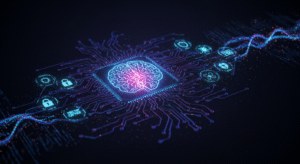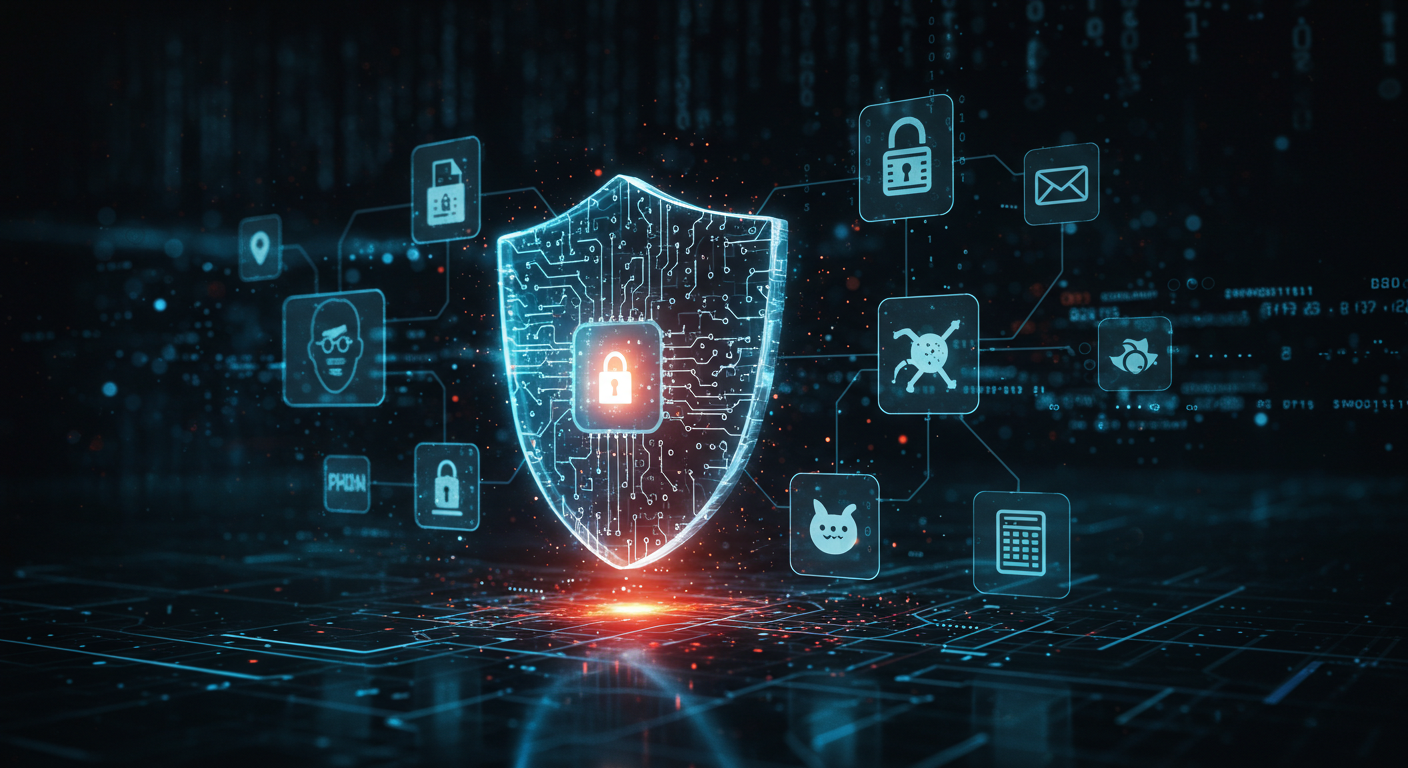As cyber threats grow increasingly sophisticated, Artificial Intelligence (AI) has become a critical tool in cybersecurity, helping organizations protect sensitive data, detect threats early, and respond to attacks in real time. However, the integration of AI also introduces new challenges, as cybercriminals leverage AI to develop more advanced and evasive attack methods. This dynamic creates a continuous arms race between defenders and attackers, making AI-driven cybersecurity solutions essential for staying ahead in 2025.

AI-Driven Cybersecurity Solutions Transforming Defense
AI-powered security tools are revolutionizing how businesses and governments safeguard their digital assets. Key innovations include:
Predictive Threat Detection
Unlike traditional rule-based systems that react to known threats, AI analyzes vast datasets in real time to predict and identify emerging cyber threats before they manifest. Machine learning models continuously learn from new attack patterns, enabling proactive defense and reducing the risk of breaches.
Automated Incident Response
Security Operations Centers (SOCs) increasingly rely on AI to automate threat response. AI systems can instantly analyze attack vectors, isolate compromised systems, and neutralize threats faster than human teams, minimizing damage and downtime.
AI-Enhanced Anomaly Detection
By monitoring network traffic and user behaviour, AI detects deviations from normal patterns that may indicate unauthorized access or malware. Tools like Google’s AI-driven security platforms provide real-time alerts, enabling rapid intervention.
The Growing Threat of AI-Powered Cyberattacks
While AI strengthens cybersecurity, attackers also exploit AI capabilities to enhance their tactics:
-
AI-Generated Phishing: Highly personalized phishing emails crafted by AI are harder to distinguish from legitimate communications, increasing their success rate.
-
Deepfake Attacks: AI-generated synthetic audio and video enable attackers to impersonate executives or employees, facilitating fraud and data breaches.
-
Adaptive AI Malware: Malware that autonomously modifies its code to evade detection renders traditional antivirus software ineffective, necessitating advanced AI defenses.
Practical Use Cases of AI in Cybersecurity
1. Protecting Small Businesses from Botnet Attacks AI analyzes traffic patterns to detect and block botnet activity, preventing website downtime and revenue loss, especially vital for resource-limited small businesses.
2. Preventing Data Breaches in Corporate Networks AI monitors user behaviour and network activity to detect suspicious data access or exfiltration attempts, automatically blocking threats to protect sensitive information.
3. Securing Healthcare Facilities AI safeguards patient data by detecting unauthorized access and automating security updates, ensuring uninterrupted operation of critical medical systems.
Emerging Trends and Predictions for 2025
-
Rise of AI Agents and Multi-Agent Systems: Autonomous AI agents working collaboratively (“agent swarms”) will tackle complex cybersecurity tasks but also introduce new vulnerabilities such as data poisoning and social engineering risks. Security teams must build robust protections into these systems by design.
-
Early Adoption by Threat Actors: Cybercriminals are rapidly adopting AI agents for surveillance, privilege escalation, and smart data exfiltration, outpacing defenders who must implement security guardrails and trust frameworks.
-
Increased Adoption of AI-Driven Threat Intelligence: Gartner predicts 70% of organizations will integrate AI-based threat intelligence systems by 2025, enhancing early detection and mitigation capabilities.
-
Strategic Incident Prevention: Organizations are focusing on early warning strategies using AI to proactively identify and remediate vulnerabilities before attacks occur, exemplified by widespread use of multi-factor authentication to prevent account takeovers.
Challenges and Considerations
-
Data Privacy Risks: Autonomous AI agents communicating without clear boundaries pose significant privacy and manipulation risks.
-
Regulatory Compliance: Organizations must navigate evolving frameworks like NIST’s AI Risk Management and Google’s Secure AI Framework to mitigate AI-related risks.
-
Balancing Automation and Human Oversight: While AI accelerates response, human expertise remains vital to interpret complex threats and guide strategic decisions.
Conclusion
In 2025, AI is both a powerful ally and a formidable adversary in cybersecurity. Its ability to predict, detect, and respond to threats in real time is transforming defense strategies, while adversaries harness AI to launch more sophisticated attacks. Organizations must embrace AI-driven security solutions, prepare for emerging AI-powered threats, and implement robust safeguards to protect data and maintain trust in an increasingly digital world.

